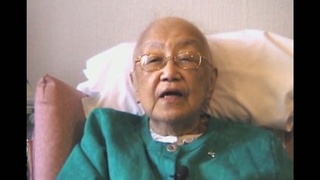Interviews
Tango makes him to stay in Argentina (Spanish)
(Spanish) When I was thirteen years old and enrolled in school I had the opportunity to listen for the first time to the Argentine tango. I was mesmerized by it. I thought to myself: “what country is this that produces such particular and personal music.” After thirteen years I was able to come to Argentina. At that moment I never thought (it was possible). And at the age of twenty-seven. So when Perón opened the doors, I thought it would be interesting to get acquainted with Argentina, at least to listen to the tango. I didn’t think to myself, “I am going to America”…rather, I came for the sake of curiosity. I loved it and I stayed. Because I didn’t know Spanish well. I know nothing of the language, and I suffered somewhat.
Date: February 23, 2007
Location: Buenos Aires, Argentina
Interviewer: Takeshi Nishimura, Ricardo Hokama
Contributed by: Centro Nikkei Argentino









